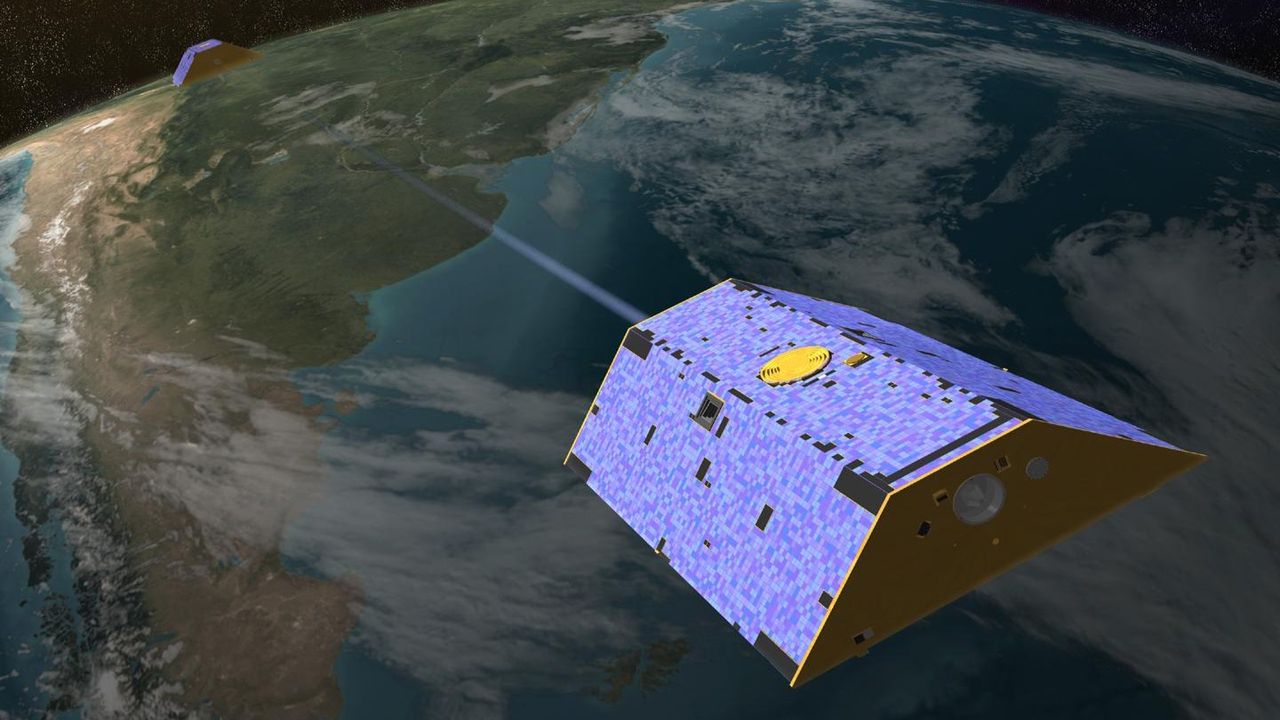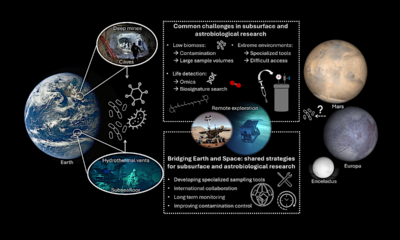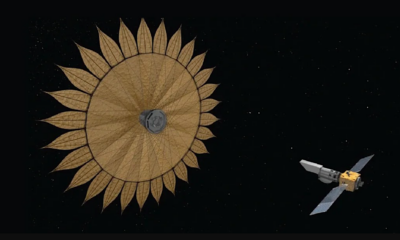Science
Satellites Uncover Deep Earth Mystery Linked to Gravity Anomaly

Satellites have detected a significant gravity anomaly originating from deep within the Earth, a phenomenon that occurred nearly 20 years ago. This unusual signal, identified off the coast of Africa, suggests a geological process that altered the planet’s gravitational field. The findings, published on August 28 in the journal Geophysical Research Letters, provide new insights into the complexities of Earth’s interior.
The anomaly was first observed between 2006 and 2008 over the eastern Atlantic Ocean, peaking in January 2007. At that time, the world was captivated by the announcement of the first iPhone, though the two events are unrelated. Researchers believe that the gravitational anomaly correlates with a geomagnetic “jerk,” which is an abrupt change in Earth’s magnetic field.
Researchers from the National Centre for Space Studies (CNES) in France, particularly co-author Mioara Mandea, conducted a thorough analysis of data collected by the Gravity Recovery and Climate Experiment (GRACE) satellites, operational from 2002 until 2017. Initially, Mandea expressed skepticism about the validity of the gravity signal. “As is often the case in scientific research, my initial response was one of questioning: is the signal genuine, how can it be validated, and how should it be interpreted?” she noted.
The GRACE satellites, a joint effort between NASA and the German Aerospace Center (DLR), were designed to measure variations in Earth’s gravitational field. They operated in tandem, measuring the distance between the two satellites to identify changes caused by shifts in mass distribution across the planet. The research team focused on signals that likely originated from deep within the Earth, rather than from surface-level influences such as water movement.
The gravity anomaly was characterized as a north-south-oriented signal, stretching approximately 4,350 miles (7,000 kilometers)—nearly the length of the African continent. This significant size indicates that the underlying geological activity was substantial.
Scientific understanding of Earth’s deep mantle, particularly the boundary between the solid mantle and the liquid outer core, remains incomplete. The lower mantle primarily consists of magnesium silicate (MgSiO3), and the researchers hypothesized that the observed mass redistributions were likely due to a phase transformation from perovskite to post-perovskite. This transformation occurs under extreme pressure, causing shifts in mass within the Earth’s interior.
Mandea emphasized the complexity of Earth’s internal processes, stating, “Earth is a complex system that must be studied using diverse datasets and complementary methods of analysis.” This comprehensive approach allows scientists to uncover hidden processes within the planet’s deep interior.
The discovery of this gravitational anomaly not only deepens our understanding of Earth’s geological processes but also highlights the importance of satellite technology in exploring planetary science. As researchers continue to investigate these findings, they hope to unravel further mysteries of our planet’s structure and behavior.
-

 Technology5 months ago
Technology5 months agoDiscover the Top 10 Calorie Counting Apps of 2025
-

 Technology3 weeks ago
Technology3 weeks agoOpenAI to Implement Age Verification for ChatGPT by December 2025
-

 Health3 months ago
Health3 months agoBella Hadid Shares Health Update After Treatment for Lyme Disease
-

 Health4 months ago
Health4 months agoAnalysts Project Stronger Growth for Apple’s iPhone 17 Lineup
-

 Health4 months ago
Health4 months agoErin Bates Shares Recovery Update Following Sepsis Complications
-

 Technology5 months ago
Technology5 months agoDiscover How to Reverse Image Search Using ChatGPT Effortlessly
-

 Technology3 months ago
Technology3 months agoElectric Moto Influencer Surronster Arrested in Tijuana
-

 Technology5 months ago
Technology5 months agoMeta Initiates $60B AI Data Center Expansion, Starting in Ohio
-

 Technology2 months ago
Technology2 months agoDiscover 2025’s Top GPUs for Exceptional 4K Gaming Performance
-

 Technology5 months ago
Technology5 months agoRecovering a Suspended TikTok Account: A Step-by-Step Guide
-

 Health5 months ago
Health5 months agoTested: Rab Firewall Mountain Jacket Survives Harsh Conditions
-

 Lifestyle5 months ago
Lifestyle5 months agoBelton Family Reunites After Daughter Survives Hill Country Floods




















